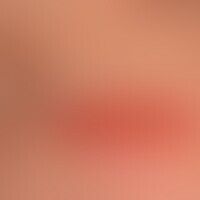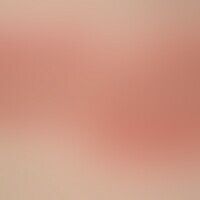Image diagnoses for "red"
876 results with 4456 images
Results forred
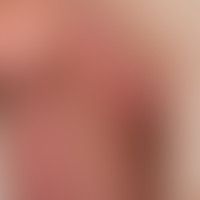
Lichen simplex chronicus L28.0
Lichen simplex chronicus. 42-year-old man. 1 year old, hardly scaly, flat raised, intermittently itching red papules and plaques.

Hand-foot-mouth disease B08.4
Hand-foot-mouth disease. few, acute, painful blisters with a red courtyard. unspecific flu-like prodromies that had lasted about 2 weeks before.
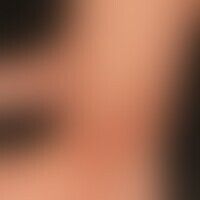
Livedovasculopathy L95.0
Livedovasculopathy: haemorrhagic-necrotic lesions on erythematous ground. periulcerous livedo image. healing leaving splatter-like, whitish scars.

Lupus pernio D86.34
Lupus pernio: 63-year-old female patient with reddish-livid plaque of the nose and previously known chronic pulmonary sarcoidosis.

Sweet syndrome L98.2
Sweet syndrome: reddish-livid, succulent, pressure-dolent, infiltrated, solitary and partly papules confluent to plaques over the spinal column in a 47-year-old female patient. 1 week before the onset of the disease intake of cotrimoxazole due to a urinary tract infection. temperatures > 38 °C

Kaposi's sarcoma (overview) C46.-
Kaposi's sarcoma epidemic (overview): HIV-associated Kaposi's sarcoma with disseminated, bizarrely configured, reddish-brown plaques, partly in a striped pattern arranged in the cleavage lines.
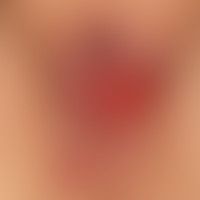
Fournier gangrene N49.8
Fournier's gangrene: Rare form of an acute gangrene of the vulva. 63-year-old female patient. Rapidly size-progressive, deep-reaching ulcer

Psoriasis vulgaris chronic active plaque type L40.0
Psoriasis vulgaris chronic active plaque type: constantly relapsing-active psoriasis with characteristics of both guttate psoriasis and plaque type.

Tinea pedis (overview) B35.30
Tinea pedum. general view: Discrete, well defined, heart-shaped, reddened, slightly scaly erythema and hyperkeratosis on the left inner side of the foot in an 80-year-old female patient with exacerbated tinea pedum. The prominent hallux valgus is altered with the same efflorescences.

Dermatofibroma D23.-

Perioral dermatitis L71.0

Psoriasis palmaris et plantaris (plaque type) L40.3
Psoriasis palmaris et plantaris (plaquet type): long-term chronic inpatient infection of the palms of the hands (in the context of generalized psoriasis), now with generalized shearing activity itching and intralesional blistering.
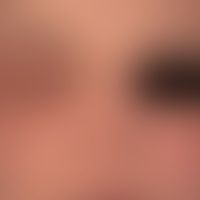
Eyelid dermatitis (overview) H01.11
Acute contact allergic eyelid eczema: Acute contact allergic dermatitis, with massive swelling of both sides of the eyelid. Considerable itching. Contact allergy not known before.

Pityriasis rosea inversa L42.x
pityriasis rosea inversa: a special form of rose lichen in the groin region. disseminated plaques with typical oval configured red scaly plaques. note: on critical inspection it is noticeable that the lesions are aligned along the skin cleft lines.

Erythema multiforme, minus-type L51.0
Erythema multiforme: typical picture with different stages of development of the efflorescences: besides fresh 0.2-0.3 cm large flat papules, further developed large plaques with discrete cockade structure.

Ecchymosis syndrome, painful R23.8
Ecchymosis syndrome, painful. intermittent manifestation of painful skin bleeding in a 52-year-old manic-depressive woman. Initial development of edematous, overheated, pressure-sensitive erythema, followed by development of bleeding and slow expansion of the skin changes.

Old world cutaneous leishmaniasis B55.1
Leishmaniasis, cutaneous, several weeks after a stay of several days in Lebanon, moderately sharply defined, roundish, red lump with central ulcer formation (here crust-covered).
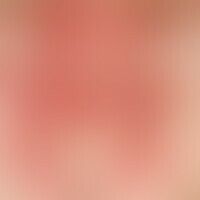
Lupus erythematosus subacute-cutaneous L93.1
Lupus erythematosus, subacute-cutaneous. detail magnification: Multiple, solitary or confluent, small spots to large areas, sharply defined, anular and gyrated erythema of neck and face of a 68-year-old female patient, partly covered with yellowish crusts.
